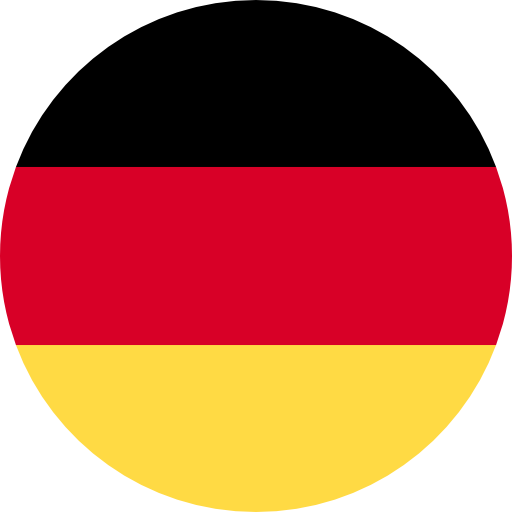
WHAT IS POWDER PAINT?
Powder as a paint?
The idea of painting surfaces with powder that form a continuous and smooth film when it melts has been developed steadily since its first appearance in the 1950s. Although thermoplastic resins were used before, thermoset powder paints that provide a much wider range of use have been developed for the last thirty years.
Increasing the use of thermoset powder paints is necessary due to the need to reduce air and water pollution. Adding to this today's high basic raw material and labor costs, powder paints are often a viable alternative compared to liquid industrial paints.
They also have advantages that do not mean anything by themselves but provide significant savings when taken together.
Some obvious advantages of thermoset powder coatings are:

Energy Saving - One of the most important advantages of powder coating is the lack of air supply to the paint booth. Because powder paints do not contain compounds that evaporate at ambient temperature, the air fed into the cabinet can be reused in the factory. This is an important advantage for factories, especially in places where weather conditions prevail.
Another important advantage is that the oven ventilation required for powder coating is much less than for liquid paints. Evaporation is very low in powder paints.
Labor Saving - Powder coatings are ready to use when they are in the user's hands. Before the application process, it does not need to be mixed with any solvent or catalyst as in many wet paints. This convenience reduces the required plant space and eliminates a very important variable to control to ensure adequate film properties in liquid paints. After the process is initiated, critical parameters such as PH, viscosity in wet paints, solid matter, specific resistance, binder / pigment ratio in electrostatic systems do not need to be kept under control. As a result, the skills and training required of operators who will work in powder coating systems are much less than wet paint systems.
It is possible to switch to automation due to the simplicity of powder coating systems. Little or no manual reinforcement may be required in such systems.

High Production Efficiency - Efficiency can be accepted between 100% in air embossed operations and 50-80% in electrostatic spray operations compared to the first time use of powder coating. The unusable amount of 20-50% can be collected properly during the application operation and can be used again in the next operation. Thus, the efficiency of powder paint usage is increased up to 95-98%. In wet paint systems, the efficiency is between 20-90%.
Since problems such as dripping, flowing or sagging in powder paints are practically impossible to occur, the amount of error has been significantly reduced. If badly painted areas are detected before the curing stage, the part can be removed from paint with an air gun and can be painted again. Powder painted parts can be taken directly into the oven as it does not contain solvent and does not require flash off time. This provides significant savings in implementation time and plant space. In addition, the risk of unwanted particles or dust adhering to the painted part that may occur during the flash-off phase is very low, thus minimizing the number of defective products.
Compared to wet paints, it is possible to obtain equal or better film properties with a single coat of paint.
Since powder paints are fully cured during the firing process, the paint damage that may occur during the removal of the parts from the oven, assembly, assembly and packaging is much less compared to wet paint. This not only reduces the processing time of the parts but also reduces the number of errors.
With thermoset powder paints, much higher values of physical and chemical resistance are obtained compared to liquid paint equivalents. In this way, the necessary packaging costs can be lowered to prevent the part coming out of the paint from being damaged during transportation.
Finally, the space required for the storage of powder paints and the powder paint production facility is often much less than for wet paint.
Environmental Factor - Although powder paints do not contain any solvent, on average 60-70% of wet paints are solvent. These solvents, which evaporate during application and firing, are not recovered and their direct exposure to the atmosphere is restricted by some standards. Therefore, in wet paint systems, a burner is placed in the chimney and the solvents are burned before they are released into the atmosphere. As this burner brings an additional cost, combustion wastes also negatively affect environmental pollution.
Another important environmental factor is environmentally hazardous wastes such as sludge, filled filters, cleaning solvents emerging after liquid paint applications. Disposing of these wastes is both costly and environmentally harmful. The booths used in the application of liquid paint systems are generally systems washed with pressurized water. The flowing paint is cleaned with water and the waste water is sometimes given directly to the sewer and sometimes to the settling tanks.
Solid waste problems in powder coating systems have been almost eliminated. Many waste powder paints can be easily disposed of in certain areas in nature. If there is a problem with dust generation, it can be wetted with water or cured slightly in the oven.

Occupational Safety and Worker Health - Since powder paints do not contain solvents, the risk of fire decreases accordingly. In this case, as the legal measures to be taken in the facility and the installments of fire insurance are reduced, various savings are also provided. In addition, in case of paint spillage, the paint can be safely and easily cleaned with the help of industrial vacuum cleaner.
It is much less dangerous to the health of the painters. Since powder paints do not contain solvents, they do not cause ear, nose and throat allergies and inflammations, which are especially common under hot conditions in liquid paint plants. A liquid paint that comes into contact with the painter's skin should first be cleaned with a solvent, then washed with hot water and soap. Some paints may also require special industrial washing detergents for this cleaning. Since all these washing agents remove some essential oils from the skin, they can cause allergies. Generally, powder paints are not allergic. However, in some special cases, some people may be sensitive to some powder paints. This dye can be easily removed from the skin by washing with warm water.
It has been revealed that the substance called TGIC, which is frequently used in polyester powder paints in recent years, has some hereditary and allergic effects. Since the emergence of this situation, some companies have developed and marketed products that do not contain TGIC.
Significant improvements have also been made in the heavy metal, especially lead content of powder paints. Lead-free powder paints of all colors are now available.
Investment Cost - Investment in a powder application facility is less costly - A powder coating plant, both manual and automatic, is extremely easy to operate and less costly than a liquid electroplating plant. According to the experience, a powder coating facility can pay its own cost in a year.
Other Advantages -
Superior film properties - Since most paint defects in solvent-based systems are due to solvent balance, the solvent balance should be adjusted according to the polymer type, application and firing conditions. There is no such problem in powder paints and in general, film properties such as adhesion / adhesion and corrosion resistance are better than liquid systems.
Non-metallic surfaces can also be painted - With the development of fast curing technologies, the variety of materials that can be painted with powder paint is increasing day by day. Some materials that can withstand the curing temperature, such as glass and thermoset plastics, can also be painted with powder paint.
Wide range of paints - Powder paints can be used with a wide variety of decorative and functional paints. These paints can be produced in a variety of gloss, from matte to bright, with a smooth, textured or grainy finish, metallic or other special effects. With the appropriate selection of the polymer type, performance characteristics such as corrosion resistance or external environmental resistance can be optimized.
Controlled film thickness - With powder dyes, the thickness can be controlled in one go and films with high thickness can be easily obtained when desired. The improvements in the surface smoothness of thin film powder paints have also made thin films among the options.
Surface preparation - As with most painted metal surfaces, preparation and pretreatments are necessary for high corrosion resistance and external environmental resistance.
Powder is cleaner in using - Applying powder is much cleaner than liquid paint. The paint booth can be easily cleaned with a rubber windscreen wiper as the booth continues to suck air. Compressed air or brushes should not be used for this cleaning. Any paint spillage outside of the paint booth should be cleaned with an industrial dustproof motorized vacuum cleaner.
Regardless, powder coating also has some limited disadvantages, including:
It is difficult to obtain thin film - It is more difficult to obtain thin film (25µ) with powder paints than with wet paints. However, considering the cost of applying powder paint collectively, it is often more economical to apply powder paint even if the film is thick.
Color change is slower - Color change can be done faster with liquid dyes. However, developments in powder coating and cleaning equipment in recent years have significantly shortened the color change period.
Powder paints cannot be mixed - Powder paints cannot be mixed to obtain different colors. However, it is considered that this situation is not very vital since the industrial users already use powder paints adjusted to the color they want. Today, powder paints are applied industrially by fluidized bed or electrostatic spraying.





